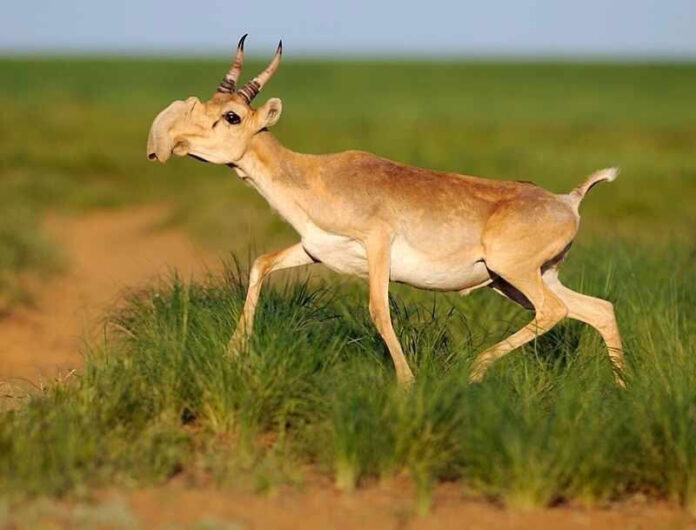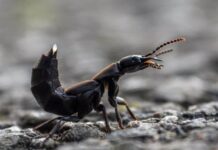Saiga or saiga antelope has the appearance that you wouldn’t imagine an antelope would look like. As you probably already know, there are not a lot of saiga antelopes that you come across every day. This is why I am here to introduce you to some information about this interesting animal today. From the appearance to the behavior, the saiga antelope has them all. So let’s see if you are interested in this cool ungulate.
1Appearance
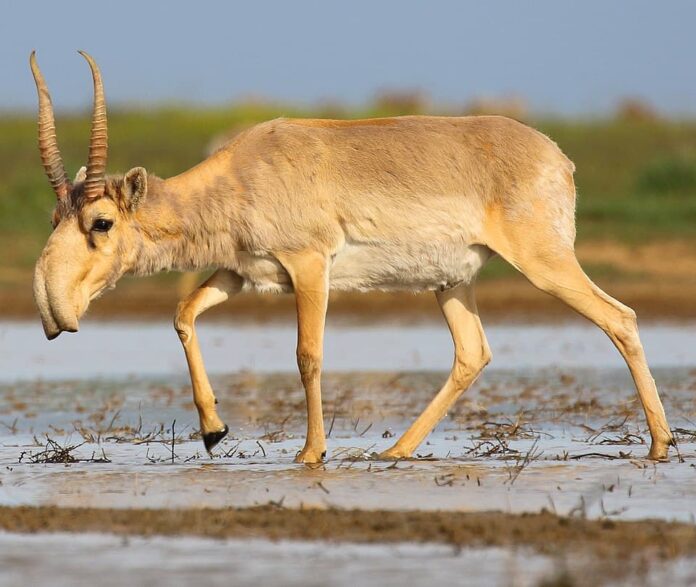
Saiga antelopes are small animals, about the size of goats, that stand from 61 to 81 centimeters tall at the shoulder. A saiga has a stooping body with a special coat that changes in different seasons, mainly summer and winter. In summer, its coat is usually yellow to red before it changes to grayish-brown in winter. This coat is around 4 to 7 centimeters, and it also forms a mane that is 12 to 15 centimeters long. Saigas have long thin legs that can bring them to a speed of 80 kilometers per hour when running from predators; wolves.
If you spot a saiga with horns, you can easily tell that it is a male. The horns are thick and slightly translucent, with 12 to 20 rings, and they are 28 to 38 centimeters in length. The most noticeable feature of this antelope is the pair of closely spaced and bloated nostrils on its face. This bulbous nose points downward, and it hangs over its mouth. The animal’s nose has the job to filter out dust kicked up by the herd in the warm summers. In winter, this nose warms the icy air before it reaches its lungs. And of course, saiga antelopes have a keen sense of smell.
2Behavior
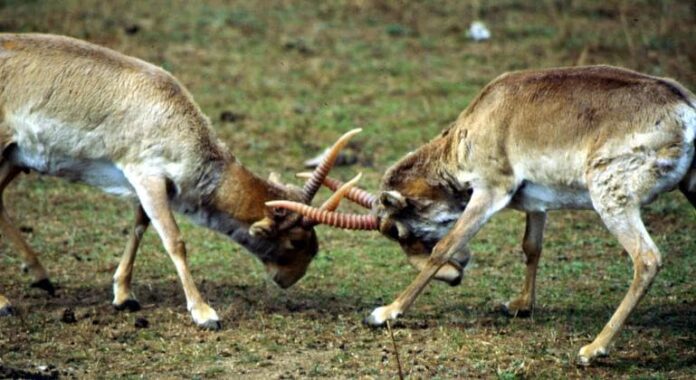
As social animals, these antelopes form very large herds that travel and graze together in grasslands, semi-deserts, and steppes. In November, the mating season starts, and that is when stags fight to get females. There is one winner in the end, and he gets to lead a harem of 5 to 10 females, some up to 50. Male saigas are very protective of their herds, and they will fight any males who get in the way. Instead of grazing, they spend most of their stored energy defending the harem, so male mortality is high in the end. As spring approaches, mothers come together in mass to give birth. The most fascinating thing is that two-thirds of births are twins, and some mothers give birth to a single calf.
3Feeding & Habitats
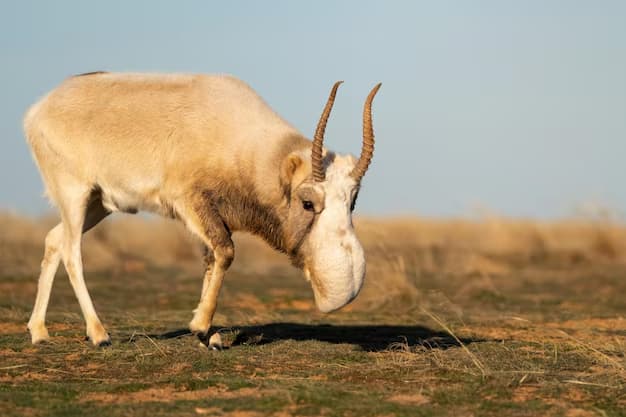
Saiga has a small range, living in Kazakhstan, Mongolia, Russia, Turkmenistan, and Uzbekistan. Their common habitats are dry treeless landscapes where they can feed on grasses, herbs, and shrubs. Antelopes are not picky when it comes to food, and saigas are the perfect example of that. They eat several species of plants like fobs, sagebrush, saltworts, and steppe lichens, even the ones that are poisonous to other animals.
Not different from many animals with horns out there, saiga antelopes are facing threats that hurt their population. People use their horns in traditional Chinese medicine, and this increases poaching and smuggling activities in China. Poachers mostly kill the males, and that results in not enough males to mate with all the females. This simply leads to a reproductive collapse. They are also being hunted for their meat; people consider their meat to be delicious and nutritious. Currently, saigas are listed as Critically Endangered on the IUCN Red List.
Related Post: Screwhorn Antelope Facts

